-
 Bitcoin
Bitcoin $115500
-2.42% -
 Ethereum
Ethereum $3669
-4.98% -
 XRP
XRP $2.962
-5.84% -
 Tether USDt
Tether USDt $1.000
0.01% -
 BNB
BNB $776.6
-3.18% -
 Solana
Solana $168.7
-6.83% -
 USDC
USDC $1.000
0.01% -
 Dogecoin
Dogecoin $0.2058
-7.89% -
 TRON
TRON $0.3256
-0.39% -
 Cardano
Cardano $0.7242
-7.45% -
 Hyperliquid
Hyperliquid $40.19
-7.21% -
 Sui
Sui $3.546
-8.07% -
 Stellar
Stellar $0.3919
-8.08% -
 Chainlink
Chainlink $16.60
-7.92% -
 Bitcoin Cash
Bitcoin Cash $564.6
-3.00% -
 Hedera
Hedera $0.2474
-9.31% -
 Avalanche
Avalanche $21.93
-8.74% -
 Ethena USDe
Ethena USDe $1.001
-0.02% -
 Toncoin
Toncoin $3.481
0.22% -
 UNUS SED LEO
UNUS SED LEO $8.933
-0.25% -
 Litecoin
Litecoin $105.3
-4.98% -
 Shiba Inu
Shiba Inu $0.00001228
-6.13% -
 Polkadot
Polkadot $3.652
-5.97% -
 Uniswap
Uniswap $9.297
-8.52% -
 Monero
Monero $306.7
-2.66% -
 Dai
Dai $0.9999
0.00% -
 Bitget Token
Bitget Token $4.396
-3.09% -
 Cronos
Cronos $0.1380
-6.60% -
 Pepe
Pepe $0.00001058
-8.52% -
 Aave
Aave $258.3
-7.43%
What are the core functionalities of Parabolic SAR?
The Parabolic SAR helps crypto traders identify trends and reversals through dots above (downtrend) or below (uptrend) price, aiding in dynamic stop-loss placement and trend-following strategies.
Jul 31, 2025 at 04:57 pm
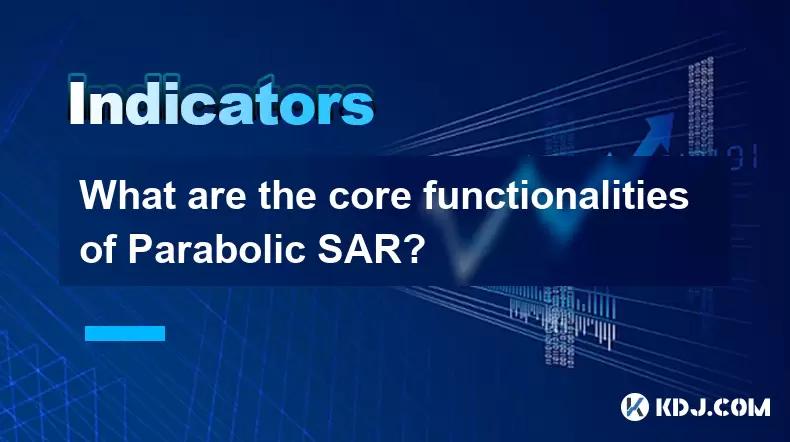
Understanding the Parabolic SAR Indicator
The Parabolic SAR (Stop and Reverse) is a technical analysis tool developed by J. Welles Wilder Jr. It is primarily used in cryptocurrency trading to identify potential reversals in price trends. The indicator appears as a series of dots placed either above or below the price chart. When the dots are positioned below the price, it signals an uptrend, suggesting bullish momentum. Conversely, when the dots appear above the price, it indicates a downtrend, reflecting bearish sentiment. This visual placement makes it a valuable tool for traders seeking to determine trend direction and potential entry or exit points.
Core Functionality: Trend Identification
One of the primary functions of the Parabolic SAR is trend identification. In the volatile world of cryptocurrency markets, recognizing whether an asset is in an uptrend or downtrend is crucial for decision-making. The placement of the SAR dots relative to price action provides immediate visual cues:
- Dots below the candlesticks indicate an upward trend
- Dots above the candlesticks indicate a downward trend
When the position of the dots flips from one side of the price to the other, it suggests a trend reversal. For instance, if the dots move from below to above the price bars, it may signal the end of a bullish phase and the beginning of a bearish one. This functionality allows traders to align their strategies with the prevailing market direction.Setting Stop-Loss Levels Dynamically
Another critical use of the Parabolic SAR is in managing risk through dynamic stop-loss placement. Unlike fixed stop-loss levels, the SAR adjusts with price movement, trailing the price as the trend progresses. This feature is especially useful in crypto trading, where prices can move rapidly: - In an upward trend, the SAR dots rise beneath the price, allowing traders to set a trailing stop just below the most recent dot
- In a downward trend, the dots fall above the price, enabling a trailing stop above the latest dot
This mechanism helps traders lock in profits while minimizing the risk of being stopped out prematurely during normal price fluctuations. The acceleration factor embedded in the SAR formula causes the dots to converge faster as the trend extends, tightening the stop-loss over time.Mathematical Structure and Calculation Process
The Parabolic SAR is calculated using a specific formula that evolves with each new price data point. The calculation involves three main components: the prior SAR value, the extreme point (EP), and the acceleration factor (AF). Here’s how it works step by step: - Start with an initial SAR value, typically the most recent extreme point in the trend
- Update the EP to the highest high in an uptrend or the lowest low in a downtrend
- Begin with an AF of 0.02, increasing it by 0.02 each time a new EP is reached, up to a maximum of 0.20
- Apply the formula:
SAR = Prior SAR + AF × (EP – Prior SAR) - Adjust the result to ensure it does not fall within or beyond the current or prior period’s price range
This iterative calculation ensures the SAR dots accelerate as the trend continues, reflecting increasing momentum and tightening the distance between the price and the reversal signal.Application in Cryptocurrency Trading Strategies
Traders integrate the Parabolic SAR into various crypto trading strategies, particularly in trend-following systems. Due to the high volatility of digital assets like Bitcoin or Ethereum, using SAR in conjunction with other indicators improves reliability. For example: - Combine SAR with the Average Directional Index (ADX) to confirm trend strength before acting on SAR signals
- Use moving averages to filter out false reversals during sideways markets
- Pair SAR with volume indicators to validate the legitimacy of a trend reversal
In a practical scenario, a trader might enter a long position when the SAR dot flips below the price and exit when it moves above. This approach works best in strong trending markets, though it can generate misleading signals during consolidation phases.Limitations and Contextual Awareness
While the Parabolic SAR is powerful, it has limitations that traders must acknowledge. It performs poorly in ranging or choppy markets, where price oscillates without a clear trend. In such conditions, the SAR may produce frequent false signals, leading to whipsaws and repeated losses. To mitigate this: - Avoid trading SAR signals when the market lacks directional momentum
- Use volatility filters such as Bollinger Bands to detect low-movement phases
- Monitor on-chain data or macroeconomic factors that could influence crypto price stability
Understanding that SAR is a lagging indicator—based on past price data—is essential. It confirms trends after they’ve begun rather than predicting them in advance.Frequently Asked Questions
Can Parabolic SAR be used on all cryptocurrency timeframes?
Yes, the Parabolic SAR can be applied to any timeframe, from 1-minute charts to weekly views. However, signals on shorter timeframes tend to be noisier and less reliable due to increased volatility. Traders often prefer using it on 1-hour or higher intervals to reduce false triggers.How do I adjust the acceleration factor in SAR?
Most trading platforms allow customization of the SAR settings. To modify the acceleration factor, access the indicator’s properties in your charting tool. You can change the initial value (default 0.02) and the maximum limit (default 0.20). A higher AF makes the SAR more sensitive, while a lower AF results in smoother, delayed signals.Does Parabolic SAR work well with altcoins?
It can work, but with caution. Altcoins often experience erratic price swings and low liquidity, increasing the risk of false SAR signals. It’s advisable to use SAR on major altcoins like Ethereum or Solana and combine it with volume analysis to improve accuracy.Is Parabolic SAR suitable for automated trading bots?
Yes, many algorithmic trading systems incorporate SAR logic for trend detection and stop-loss management. The clear rules for dot placement and reversal make it programmable. However, bots should include additional filters to avoid executing trades during sideways market conditions.
Disclaimer:info@kdj.com
The information provided is not trading advice. kdj.com does not assume any responsibility for any investments made based on the information provided in this article. Cryptocurrencies are highly volatile and it is highly recommended that you invest with caution after thorough research!
If you believe that the content used on this website infringes your copyright, please contact us immediately (info@kdj.com) and we will delete it promptly.
- Rarible Integrates Somnia Blockchain: A New Era for NFT Gaming?
- 2025-08-01 12:30:11
- JPMorgan, Coinbase, and Crypto Mainstream: A New York Minute on the Future of Finance
- 2025-08-01 12:30:11
- Altcoin Season in Full Swing: Market Shift and Key Metrics to Watch
- 2025-08-01 12:50:12
- Ripple, XRP, and RLUSD: Navigating Growth and Innovation
- 2025-08-01 08:30:37
- Tether's Triumph: Profits, US Initiatives, and Stablecoin Supremacy
- 2025-08-01 09:11:00
- Ethereum, ZK-VMs, and Quantum Resistance: A New Era for Blockchain Security?
- 2025-08-01 09:30:12
Related knowledge

Does the KDJ indicator work well for low-liquidity crypto assets?
Aug 01,2025 at 02:01pm
Understanding the KDJ Indicator in Cryptocurrency TradingThe KDJ indicator is a momentum oscillator derived from the Stochastic Oscillator, widely use...
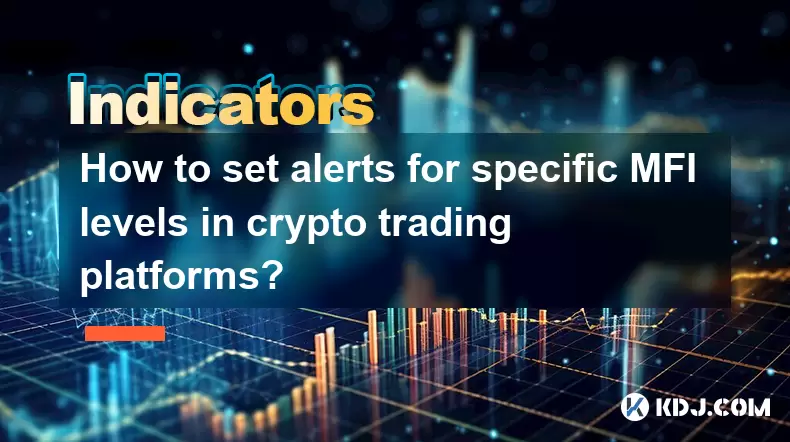
How to set alerts for specific MFI levels in crypto trading platforms?
Aug 01,2025 at 12:42pm
Understanding the Money Flow Index (MFI) in Crypto TradingThe Money Flow Index (MFI) is a momentum oscillator that measures the flow of money into and...
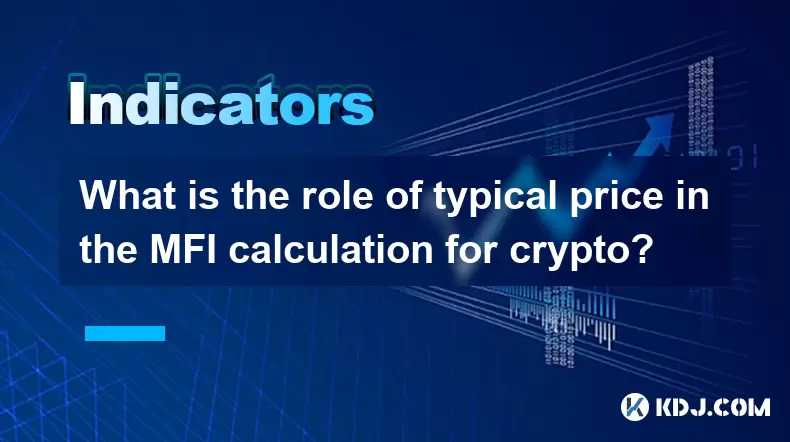
What is the role of typical price in the MFI calculation for crypto?
Aug 01,2025 at 12:21pm
Understanding the Typical Price in MFI for Cryptocurrency AnalysisThe Typical Price plays a crucial role in the calculation of the Money Flow Index (M...
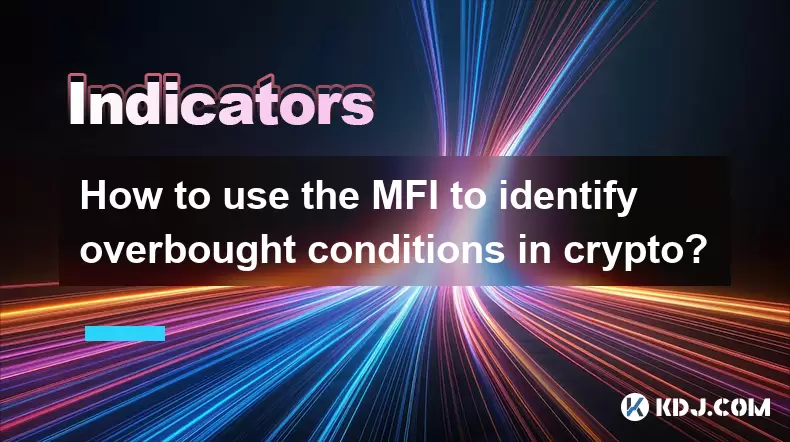
How to use the MFI to identify overbought conditions in crypto?
Aug 01,2025 at 10:49am
Understanding the Money Flow Index (MFI) in Cryptocurrency TradingThe Money Flow Index (MFI) is a momentum oscillator that measures the inflow and out...
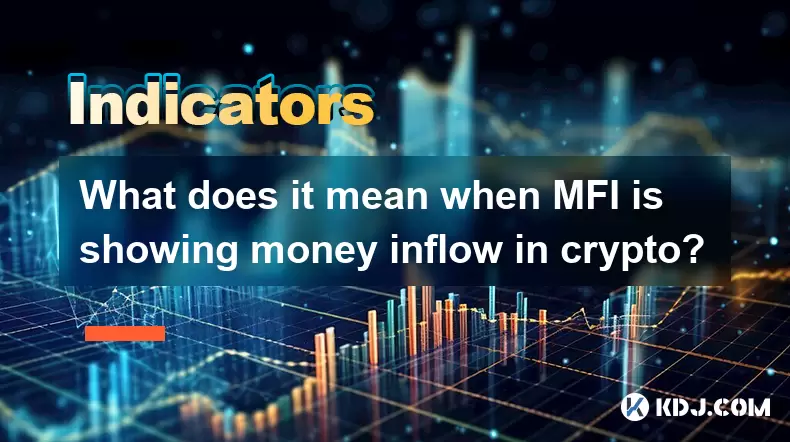
What does it mean when MFI is showing money inflow in crypto?
Aug 01,2025 at 01:28pm
Understanding the MFI Indicator in Cryptocurrency MarketsThe Money Flow Index (MFI) is a technical oscillator that measures the flow of money into and...
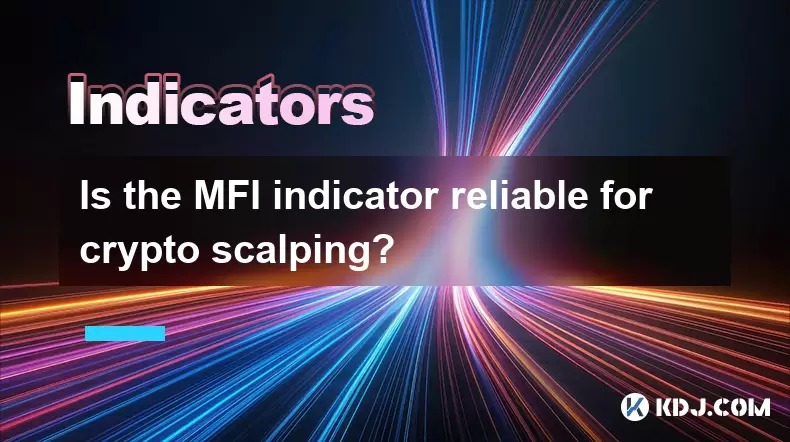
Is the MFI indicator reliable for crypto scalping?
Aug 01,2025 at 11:00am
Understanding the MFI Indicator in Cryptocurrency TradingThe Money Flow Index (MFI) is a momentum oscillator that measures the flow of money into and ...

Does the KDJ indicator work well for low-liquidity crypto assets?
Aug 01,2025 at 02:01pm
Understanding the KDJ Indicator in Cryptocurrency TradingThe KDJ indicator is a momentum oscillator derived from the Stochastic Oscillator, widely use...

How to set alerts for specific MFI levels in crypto trading platforms?
Aug 01,2025 at 12:42pm
Understanding the Money Flow Index (MFI) in Crypto TradingThe Money Flow Index (MFI) is a momentum oscillator that measures the flow of money into and...

What is the role of typical price in the MFI calculation for crypto?
Aug 01,2025 at 12:21pm
Understanding the Typical Price in MFI for Cryptocurrency AnalysisThe Typical Price plays a crucial role in the calculation of the Money Flow Index (M...

How to use the MFI to identify overbought conditions in crypto?
Aug 01,2025 at 10:49am
Understanding the Money Flow Index (MFI) in Cryptocurrency TradingThe Money Flow Index (MFI) is a momentum oscillator that measures the inflow and out...

What does it mean when MFI is showing money inflow in crypto?
Aug 01,2025 at 01:28pm
Understanding the MFI Indicator in Cryptocurrency MarketsThe Money Flow Index (MFI) is a technical oscillator that measures the flow of money into and...

Is the MFI indicator reliable for crypto scalping?
Aug 01,2025 at 11:00am
Understanding the MFI Indicator in Cryptocurrency TradingThe Money Flow Index (MFI) is a momentum oscillator that measures the flow of money into and ...
See all articles

























































































